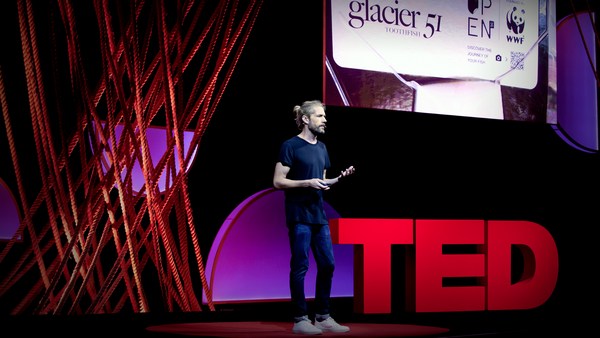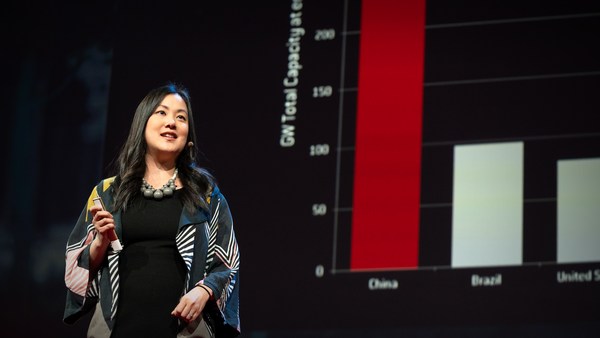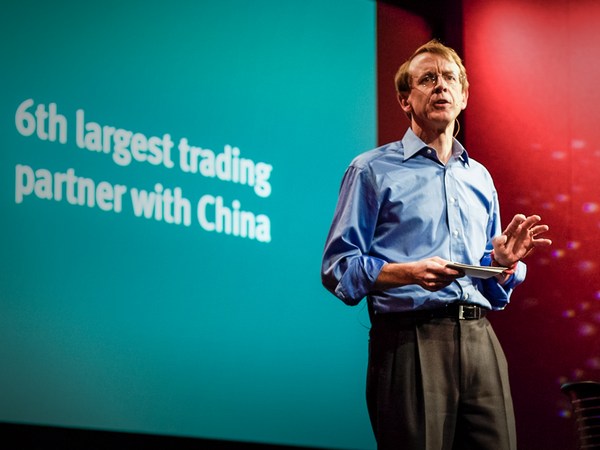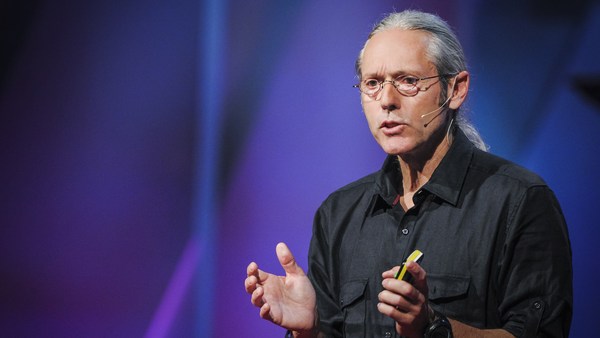Choking smog, polluted waters, climate change. This has been the environmental cost of the tremendous growth in China over the past 40 years. At the same time, hundreds of millions of people have put themselves out of poverty. As an environmentalist in China, I have witnessed all of this firsthand. The challenge we're facing is: Can we clean up as fast and as broadly as the massive development degrading our air, water and climate?
China has one point four billion people, still a fast-growing economy, and is responsible for the biggest share of the current greenhouse gas emissions. China knows its global responsibility and has pledged to be carbon-neutral by 2060. It means more than 10 billion metric tons of carbon emissions must be stopped or be neutralized. How can we possibly do it? The pressing global climate situation requires each of us not just to do it, but to do it faster.
I believe there's a chance for us to succeed, as I know a tool that I have seen worked to help reduce the enormous environmental pollution. It is the power of transparency, pollution information made public using mobile internet and other IT technologies may empower millions of citizens to speed change by holding corporations and government agencies accountable.
I personally got involved in the transparency drive for water pollution control. Years ago, beside Lake Tai, the third largest freshwater lake in China, I saw a group of fishermen using long ladles to scoop out the algae bloom. One fisherman said to me, "When I was young, on a hot day like this, I would have jumped into the lake for a [swim].” "But now," he said, "the fish are gone and we're paid to scoop out the algae." Pointing to those factories not far from the shoreline, he said the lake would not be clean until they stop dumping.
Years of research made me understand how hard it is to check the dumping. With weak enforcement, the cost of violations was often too low, and those who cut corners became more competitive in the market. This region happens to be one of the biggest centers of the global supply chain for electronic gadgets and for clothes. But those multinational brands sourcing locally were not very helpful at the beginning. Many would argue, "In China, I don't know who is polluting, so I would buy from the cheapest." This is going to add further pressure on those local suppliers to race down to the bottom for their contracts.
But I told them I have a map that can help them figure out who is polluting. From 2006, we began to compile corporate monitoring data data into a database known as the Blue Map. We started with only two thousand records of violations, but through years of promotion of enforcement and transparency, that number has topped two million. The missing dots in the global supply chain's environmental management began to be connected when a group of [electronic] and textile brands started comparing their list of suppliers with our list of violators.
Let me explain how it works. This is the Blue Map for the Yangtze River Delta, which covers the Lake Tai region. Each individual factory -- and there are tens of thousands of them -- is color coded. Blue and green for "good," red and yellow for "bad." The color codes are derived from the violations on record and the confirmed public reporting. And we have put more than four million of such dots on the digital map, all color coded.
Still, how can a map make change? This is one of the largest dyehouse suppliers. It used to have multiple violation records, but insisted if they treat the waste but not their neighbors’, they would lose their business. But then five brands, starting from Gap, all told this company it would lose their business if it would not treat the waste properly. Realizing that the sourcing code has changed, the company spent millions of dollars to bring more than 12 million metric tons of textile wastewater contaminated by dyes and chemicals up to standards, and then made further investments to cut the volume of wastewater.
We did the same thing, along with our local partners, such as Green Jiangnan, with the electronic industry suppliers that manufacture parts for Apple, Dell, Huawei and other major brands. Here is one of the largest [electronic] suppliers, dredging the local canal to remove the heavy metals dumped in it.
Victories like this build upon each other to enable the supply chain management to reach further upstream through the supply chain, from garment factories to fabric mills to dyehouses to the dye manufacturers. Today, the color codes can mean the difference between a company that secures a loan from a major bank, like the Postal Bank of China, and one that does not. The application of the Blue Map data, in green supply chain and green finance, has motivated more than fourteen thousand companies to address their violations or make disclosure.
The scope of environmental transparency got further extended in China during its epic fighting against the severe smog, which used to expose hundreds of millions of people to health hazards. In response to the public demand for disclosure, corporate online monitoring data were made open every hour or every two hours. The first of its kind in the world. At the same time, people were acquiring cell phones across China, so we developed a cell phone app to enable people to access the air and water quality data. But the most unique function of the Blue Map app is for our users to access the records of emitters, then share through social media, tagging the official account. Such kind of a microreporting has motivated some of the largest emitters to change behavior.
This is one of them, a listed steel plant which used to breach the standards repeatedly. The microreporting filed by the local Blue Map users and NGOs has got a local agency to weigh in and require this company to clean up. Eventually, the steel plant spent more than one billion dollars to make a very deep cut in its air emissions, a contribution to the significant improvement of air quality in a vast airshed, which includes my city, Beijing.
Despite all the successes, I have to acknowledge our mission is far from being accomplished. There are still more than two million records of violations in the Blue Map. Today, we face massive tension between environmental protection and economic recovery, brought on by the COVID-19 pandemic as well as the looming climate catastrophe. There's a strong temptation, In local regions and cities, to relax environmental regulations, which has resulted already in a rather big rebound of the carbon emissions.
So China's 2060 carbon neutrality pledge came at a critical moment. But the implementation of it wouldn't be easy. Remember the steel plant that already spent one billion dollars to clean up? Now the new task is for us to review with it how to tackle the 10 million metric tons of carbon emission. And this is just zero point one percent of the carbon emissions that we need to stop or neutralize in China. Again, we must tap into the power of transparency.
My team and I have launched a Blue Map for Zero Carbon, a database that needs to bring China's long-term national commitment down to where that 10 billion tons of carbon are actually emitted. This is how a zero-carbon map looks like. Each province and city is color-coded based on its level of emission. With trend analysis, tracking when and at what level the carbon will peak and stop growing. As you can see, the cities of Beijing, Shanghai, are on track, while others like Tangshan, like Yinchuan, still have a long way to go.
To generate peer pressure and incentives, we're working with our partner, the Chinese Academy of Environmental Science, in assessing the local climate ambition, performance and carbon-decoupling trends of major provinces, cities and energy and raw-material companies. One clear gap we identified is the lack of capacity in measuring and reporting. Along with other partners, we developed a digital carbon accounting platform. So far, more than five thousand companies have been motivated by brands and banks to calculate and report their carbon emissions or local emissions.
But my dream is to empower millions of more businesses, to measure and to report and to reduce their emissions. Bear in mind many of them are part of this global supply chain. If you know the product you consume day in and day out, often has 70 percent or more, and sometimes to up to 90 percent, of their carbon footprint in the supply chain, would you join our efforts in motivating the big brands and banks and investors to green their global sourcing and investment?
And it's not just carbon. Today, we further expand the Blue Map to cover waste and plastics and even biodiversity so as to empower more people to join this unprecedented global race to zero. The prize for winning this ongoing race is nothing less than a better world for this generation and for the generations to come. For mankind and for all the plants and animals that call this planet their home.
Thank you.





